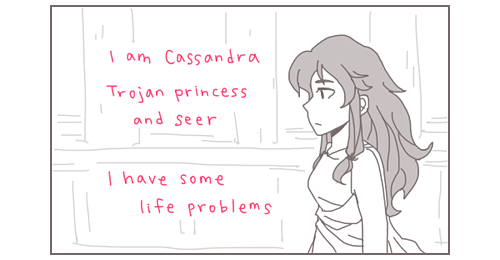learning by ear
May. 4th, 2019 11:11 amSo the last banjo lesson, the teacher didn't give us sheet music. He showed us the technique for the riffs he wanted us to use, and then had me record him playing the song using my phone, and wants us to learn by ear, since they don't give you sheet music at jam sessions.
Fine, but.
I can't remember exactly how the riff he showed me actually went, and i can't pick it out on the video. The video is a minute and a half long, and he doesn't play straight through, he shows a couple of different parts, and then he explains some things, and I can't keep it straight.
So I think... I mean, I get what he's aiming at, with this technique-- you don't get sheet music, most places, and so if you're going to ever play out anywhere, you need to be ready to just pick up a song from what's in front of you, and be able to then build around it the ornamentation techniques and riffs that make it a banjo piece.
You never just strum chords on a banjo, you always pick strings individually, and so you tend to "roll" a chord using a pre-set number of little patterns, and once you know where the melody is, there are techniques so that you get into the chord surrounding the melody note and then pick in a rolling fashion to fill in the rest of it, and there are a few ways you can make the melody stand out so you learn those, and then there are little space-filler noises you make, and some pre-set riffs that go between phrases to pad them out and give the melody a little more time. And, as he explained, in bluegrass especially, you follow the melody or the singer, and they sometimes improvise or hesitate or skip around in the song, and so your playing needs to follow them pretty freely and you can't be married to something like a sheet music version of the song. You identify the components, and use them where appropriate, and then fill the rest in with congenial noises. Some of the riffs are cues, too-- think about how a blues song ends, and you absolutely already know. Bluegrass is full of those, ones that mean "here beginneth the song" and "this is the good part" and "switching to the B part now, buckle up" and "this is the end but there's probably a repeat!" and "no this is really the end now!" That's the banjo's job, in a bluegrass ensemble, and likewise in most genres where you find a banjo nowadays; they're noise machines and have zero sustain so have to be continually plucked or you might as well not have them there at all.
So I get what he's aiming at, but I don't know that we're actually there yet. :/
I'm also overcoming my entire life in band and orchestra from school, where we were expected to read the sheet music at all times and never deviate from it. I tended to memorize the sheet music by the second or third week, and just play my part from ear after that, but I'd get yelled at if anyone noticed. School bands are kind of the opposite of most real-life kinds of situations.
So i'm in a better spot than Dude, who is better at reading sheet music and more fastidious about practicing until he's precisely correct, but who can't really learn well by ear. (The way our practice tends to work is that he picks at the sheet music until he thinks it's right, I point out where it doesn't sound like what the teacher played, he notes where there are probably errors in the sheet music, and then I practice by imitating him, but this falls apart if he doesn't have sheet music to go from, and now I'm going to probably have to figure out the current piece from the video, which is on my phone and I can't figure out how to get it onto his, and we're going to run into how grouchy he gets when I try to teach him things, so it should be a Delight...)
Anyway, eventually, I ought to know how to play Ol Slewfoot, but I'm not holding out a whole lot of hope. I still can't play our first-ever song, that we started learning in February, reliably enough withouterrands errors (ed note: wtf me) to record a video, which is what I've been meaning to do since about March.
But! I own my own banjo and it's real pretty, so.
Adult hobbies are rough, man.
Fine, but.
I can't remember exactly how the riff he showed me actually went, and i can't pick it out on the video. The video is a minute and a half long, and he doesn't play straight through, he shows a couple of different parts, and then he explains some things, and I can't keep it straight.
So I think... I mean, I get what he's aiming at, with this technique-- you don't get sheet music, most places, and so if you're going to ever play out anywhere, you need to be ready to just pick up a song from what's in front of you, and be able to then build around it the ornamentation techniques and riffs that make it a banjo piece.
You never just strum chords on a banjo, you always pick strings individually, and so you tend to "roll" a chord using a pre-set number of little patterns, and once you know where the melody is, there are techniques so that you get into the chord surrounding the melody note and then pick in a rolling fashion to fill in the rest of it, and there are a few ways you can make the melody stand out so you learn those, and then there are little space-filler noises you make, and some pre-set riffs that go between phrases to pad them out and give the melody a little more time. And, as he explained, in bluegrass especially, you follow the melody or the singer, and they sometimes improvise or hesitate or skip around in the song, and so your playing needs to follow them pretty freely and you can't be married to something like a sheet music version of the song. You identify the components, and use them where appropriate, and then fill the rest in with congenial noises. Some of the riffs are cues, too-- think about how a blues song ends, and you absolutely already know. Bluegrass is full of those, ones that mean "here beginneth the song" and "this is the good part" and "switching to the B part now, buckle up" and "this is the end but there's probably a repeat!" and "no this is really the end now!" That's the banjo's job, in a bluegrass ensemble, and likewise in most genres where you find a banjo nowadays; they're noise machines and have zero sustain so have to be continually plucked or you might as well not have them there at all.
So I get what he's aiming at, but I don't know that we're actually there yet. :/
I'm also overcoming my entire life in band and orchestra from school, where we were expected to read the sheet music at all times and never deviate from it. I tended to memorize the sheet music by the second or third week, and just play my part from ear after that, but I'd get yelled at if anyone noticed. School bands are kind of the opposite of most real-life kinds of situations.
So i'm in a better spot than Dude, who is better at reading sheet music and more fastidious about practicing until he's precisely correct, but who can't really learn well by ear. (The way our practice tends to work is that he picks at the sheet music until he thinks it's right, I point out where it doesn't sound like what the teacher played, he notes where there are probably errors in the sheet music, and then I practice by imitating him, but this falls apart if he doesn't have sheet music to go from, and now I'm going to probably have to figure out the current piece from the video, which is on my phone and I can't figure out how to get it onto his, and we're going to run into how grouchy he gets when I try to teach him things, so it should be a Delight...)
Anyway, eventually, I ought to know how to play Ol Slewfoot, but I'm not holding out a whole lot of hope. I still can't play our first-ever song, that we started learning in February, reliably enough without
But! I own my own banjo and it's real pretty, so.
Adult hobbies are rough, man.

